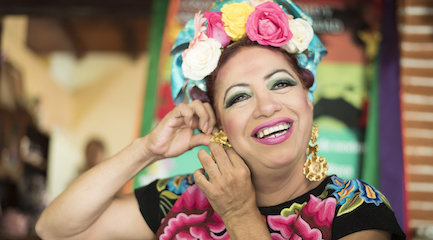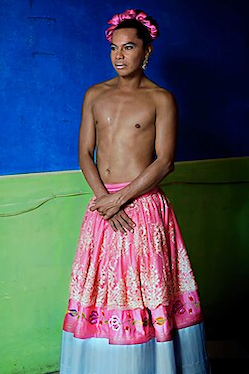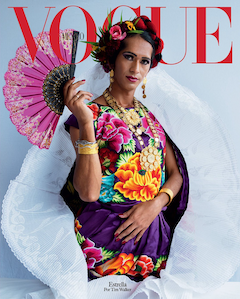
Muxes (pronounced “moo-shay.” A recognized third gender within the Zapotec indigenous community of Oaxaca, Mexico, embodying a cultural identity that transcends Western binary gender constructs.
The Muxes maintain traditional dress, the Zapotec language, and other cultural traditions that are less prevalent among the broader Zapotec community. Generally, muxes are assigned as male at birth, but dress or act in a feminine way. This ancient tradition predates Spanish colonization and continues to thrive in the Isthmus of Tehuantepec, where muxes serve as cultural guardians and integral community members.
Cultural Significance and Identity

Embodying characteristics of both men and women, their existence challenges the gender binary that is so deeply entrenched in Western society. Unlike Western transgender concepts, muxe identity encompasses far more than gender expression alone.
Muxe identity not only involves gender identity and presentation, but also a preservation of Zapotec culture and customs. The Zapotec language itself facilitates this understanding, as unlike Spanish, which assigns gender even to objects within its grammar, the Zapotec language is completely gender neutral.
Muxes typically assume feminine household roles, including cooking, cleaning, and caring for elderly relatives and children. They work as hairdressers and embroiderers (the floral, Zapotec huipil garments heavily inspired Frida Kahlo‘s style).
Importantly, muxes do not identify as either male or female, nor necessarily as trans. They define themselves outside these restrictive Western terms.
Historical Context and Colonial Resistance
The muxe tradition represents remarkable cultural resilience. Anthropologists trace the acceptance of people of mixed gender to pre-Colombian Mexico, pointing to accounts of cross-dressing Aztec priests and Mayan gods who were both male and female at the same time. Spanish colonizers wiped out most of those attitudes in the 1500s by forcing Indigenous tribes to convert to Catholicism, but mixed-gender identities managed to survive in the quiet outskirts of metropolitan Mexico among the Zapotec people in southern Oaxaca.
Los muxes resisted against the heteronormative standard which was forcibly imposed on Indigenous groups during the colonial era, and to this day they continue to disrupt gender binaries and campaign for greater acceptance of sexual diversity. This resistance has preserved an alternative understanding of gender that offers valuable perspectives on human identity and social organization.
Contemporary Recognition and Demographics

One study estimates that 6% of males in an Isthmus Zapotec community in the early 1970s were muxes. The muxe community has gained international attention, particularly after Vogue Mexico featured a series of editorial portraits, and profile of the Muxe community in the Oaxaca town of Juchitán in 2019, marking the first time muxes appeared on a major fashion magazine cover.
The muxe tradition extends beyond rural communities, with celebrations like the annual Vela Muxe Los Angeles demonstrating the diaspora’s cultural continuity. The Zapotecs, the indigenous people who live in Juchitán, recognize the muxes as a third gender since they have memory. They are respected and celebrated as an integral part of a culture, centered on femininity and fertility.
The muxe identity offers profound insights into the constructed nature of gender roles and the possibility of more inclusive social structures. As global conversations about gender identity evolve, the Zapotec understanding of muxes provides a compelling example of how societies can embrace gender diversity while maintaining cultural coherence and community acceptance.